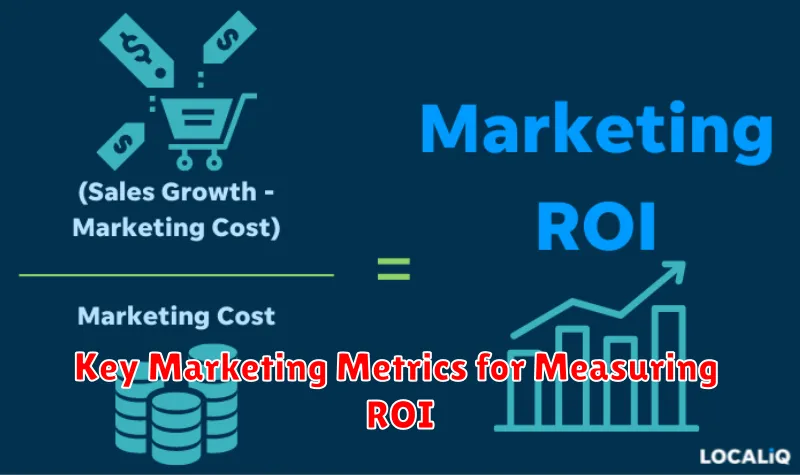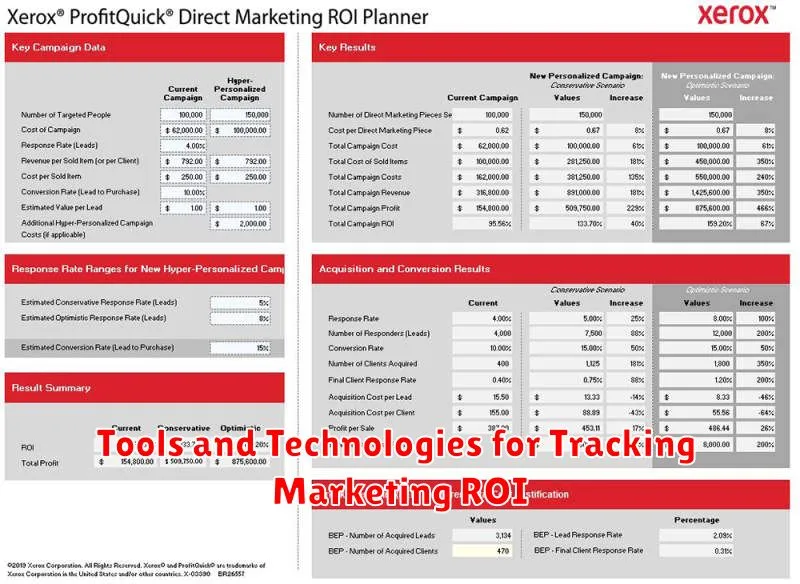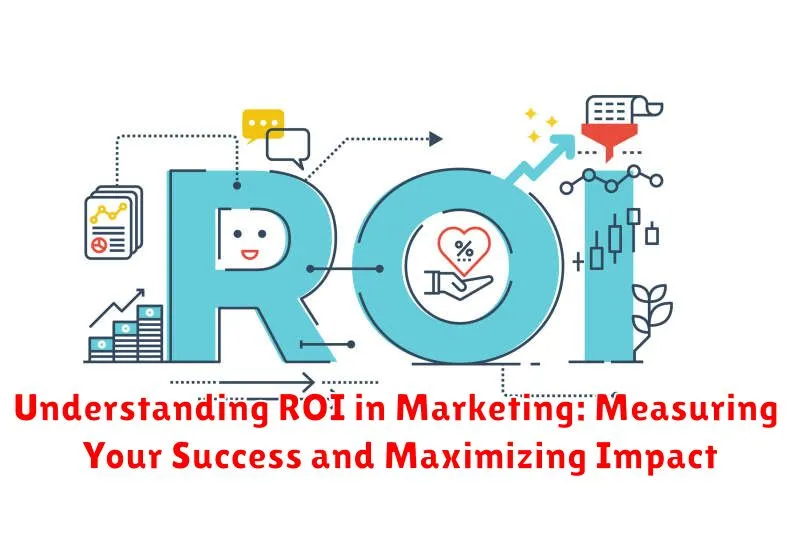In today’s competitive business landscape, understanding Return on Investment (ROI) in marketing is paramount. Marketing ROI measures the effectiveness of your campaigns by analyzing the relationship between marketing investment and the resulting profit. Accurately measuring ROI is crucial for demonstrating the value of your marketing efforts, securing budgets, and optimizing campaigns for maximum impact. This article will provide a comprehensive guide to understanding, calculating, and improving your marketing ROI, ultimately empowering you to make data-driven decisions and achieve marketing success.
Whether you’re focusing on digital marketing, traditional strategies, or a combination of both, grasping the nuances of ROI is essential. This article will delve into various ROI metrics, explore practical methods for calculating ROI for different channels, and offer strategic insights to maximize your returns. From lead generation and customer acquisition cost (CAC) to conversion rates and lifetime value (LTV), we’ll cover key aspects of marketing measurement to help you demonstrate the impact of your marketing initiatives and drive business growth.
What is ROI in Marketing?
In marketing, ROI stands for Return on Investment. It’s a crucial metric used to measure the effectiveness and profitability of your marketing campaigns. Essentially, it quantifies how much revenue you generate for every dollar you spend on marketing activities.
Calculating marketing ROI helps you understand which strategies are working, which ones need improvement, and where to allocate your budget for optimal results. A positive ROI indicates that your marketing efforts are generating more revenue than they cost, while a negative ROI suggests that your campaigns are not profitable.
It’s important to note that marketing ROI isn’t always easy to measure directly. Attributing specific revenue to individual marketing efforts can be complex, especially with multi-faceted campaigns. However, by focusing on key metrics and utilizing appropriate measurement tools, you can gain valuable insights into your marketing performance and make informed decisions about future investments.
Why is Measuring Marketing ROI Important?
Measuring marketing ROI is crucial for several key reasons. It provides accountability, demonstrating the value of marketing efforts and justifying budget allocation. By understanding which campaigns generate the highest return, marketers can optimize resource allocation, shifting investments towards more effective strategies.
Data-driven decision making is another significant benefit. ROI measurement provides concrete data to inform future campaigns, helping marketers refine their approach and improve overall performance. This leads to continuous improvement, enabling marketers to learn from both successes and failures and adapt their strategies accordingly.
Finally, measuring ROI helps demonstrate the impact of marketing activities on the bottom line. This is essential for securing buy-in from stakeholders and showcasing the value of the marketing department to the organization as a whole.
How to Calculate Marketing ROI
Calculating marketing ROI involves determining the net return from a marketing investment relative to its cost. The basic formula is:
(Net Return - Marketing Investment Cost) / Marketing Investment Cost = ROI
For example, if a campaign generated $10,000 in revenue and cost $2,000 to execute, the ROI would be:
($10,000 - $2,000) / $2,000 = 4 or 400%
This indicates that for every dollar invested, the campaign generated four dollars in return. Net return is calculated by subtracting the cost of goods sold (COGS) and marketing expenses from the total revenue generated by the campaign.
It’s important to track all associated costs, including advertising spend, software subscriptions, salaries of personnel involved, and agency fees, to accurately measure the marketing investment. Remember to define specific timeframes for measurement, whether it’s monthly, quarterly, or annually.
Key Marketing Metrics for Measuring ROI

Several key metrics can help you effectively measure your marketing ROI. Tracking these metrics provides valuable insights into campaign performance and helps identify areas for optimization.
Website Analytics
Website traffic, including unique visitors and page views, indicates campaign reach. Conversion rates, such as form submissions or purchases, demonstrate how effectively campaigns drive desired actions. Bounce rate helps identify areas of improvement in website user experience.
Lead Generation Metrics
Tracking the number of leads generated by each campaign provides a direct measure of its effectiveness in attracting potential customers. Analyzing lead quality through metrics like conversion rates helps assess the value of those leads.
Sales Metrics
Sales revenue generated directly attributed to specific marketing campaigns is a crucial indicator of ROI. Tracking the customer lifetime value (CLTV) provides insights into the long-term impact of marketing efforts.
Customer Acquisition Cost (CAC)
Understanding the cost of acquiring a new customer is essential for evaluating the efficiency of marketing spend. Lowering CAC while maintaining or improving other metrics signifies increased profitability.
Challenges in Measuring Marketing ROI
Accurately measuring marketing ROI isn’t without its hurdles. Attribution is a major challenge, as pinpointing a specific sale to a particular marketing effort can be complex, especially in multi-channel campaigns. Did the customer convert due to the social media ad, the email newsletter, or the in-store promotion?
Data integration poses another difficulty. Marketing data often resides in disparate systems, making a holistic view challenging. Combining data from CRM systems, analytics platforms, and other sources requires careful planning and execution.
Time lag between marketing activity and resulting sales can also skew ROI calculations. Some campaigns might have a delayed impact, making it difficult to connect efforts to immediate revenue.
Finally, isolating the impact of external factors is crucial. Market trends, economic conditions, and competitor activities can all influence sales, making it challenging to attribute success solely to marketing efforts.
Best Practices for Improving Marketing ROI
Improving your marketing ROI requires a strategic approach and consistent optimization. Clearly defined goals are paramount. Without specific, measurable, achievable, relevant, and time-bound (SMART) objectives, measuring success becomes impossible.
Target audience segmentation is crucial. Focusing your efforts on the most receptive segments maximizes impact and minimizes wasted ad spend. Conduct thorough market research to understand your audience’s needs, preferences, and behaviors.
Consistent performance monitoring and analysis are essential. Regularly review key metrics such as conversion rates, cost per acquisition, and customer lifetime value. Identify areas for improvement and adjust your strategies accordingly.
A/B testing allows you to compare different versions of your marketing materials. This helps identify which variations resonate best with your target audience and drive the highest ROI. Test different headlines, calls to action, images, and ad copy.
Tools and Technologies for Tracking Marketing ROI

Accurately tracking marketing ROI requires leveraging the right tools and technologies. Analytics platforms like Google Analytics and Adobe Analytics provide comprehensive data on website traffic, user behavior, and conversions. These platforms allow marketers to understand which campaigns are driving valuable actions and attribute revenue to specific marketing efforts.
CRM (Customer Relationship Management) systems are essential for connecting marketing activities to sales outcomes. By integrating CRM data with marketing analytics, businesses can track leads through the sales funnel and determine the ROI of campaigns that generate qualified leads and ultimately, customers.
Marketing automation platforms streamline and automate marketing tasks while providing valuable data on campaign performance. These platforms often include features for A/B testing, lead scoring, and email marketing analytics, enabling marketers to optimize campaigns and improve ROI.
Finally, dedicated attribution modeling tools offer sophisticated methods for assigning credit to different touchpoints in the customer journey. This helps marketers understand the relative contribution of various channels and campaigns to overall ROI, leading to more informed budget allocation and strategy development.
Case Studies of Successful Marketing ROI
Examining real-world examples helps illustrate the impact of effective ROI measurement and optimization. Here are two brief case studies:
Case Study 1: E-commerce Retailer
An e-commerce retailer specializing in outdoor gear implemented a targeted email marketing campaign focusing on personalized product recommendations. By analyzing past purchase behavior and browsing history, they segmented their customer base and tailored email content accordingly. This resulted in a 15% increase in conversion rates and a 20% increase in average order value, demonstrating a strong positive ROI on their email marketing investment.
Case Study 2: SaaS Company
A Software-as-a-Service (SaaS) company focused on content marketing to drive leads. They invested in creating high-quality blog posts, articles, and downloadable resources optimized for relevant keywords. By tracking website traffic, lead generation, and eventual conversions, they were able to attribute a 30% increase in qualified leads directly to their content marketing efforts. This demonstrably improved their marketing ROI and justified further investment in content creation.

